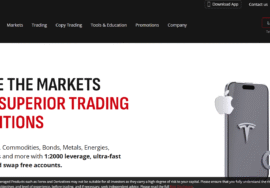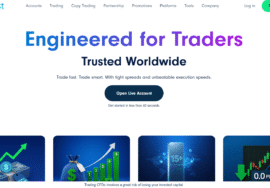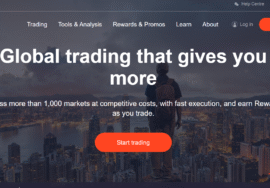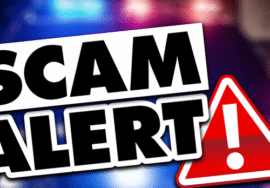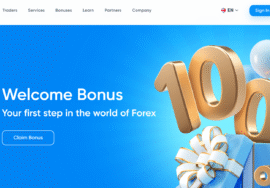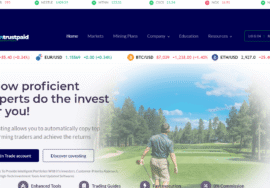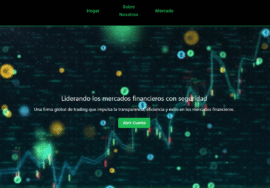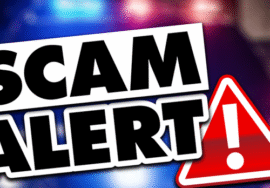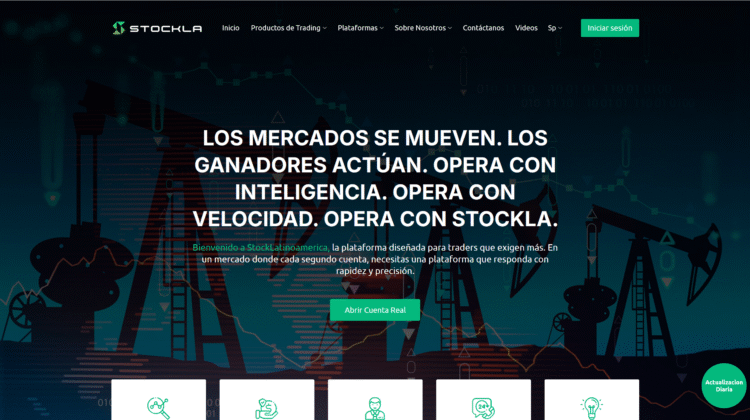
9 Explosive Warnings Every Investor Must See Before Trusting Stockla
9 Explosive Warnings Every Investor Must See Before Trusting Stockla
In 2025, scam brokers don’t look like scams. They look sleek. They speak in the glossy language of “AI-driven strategies,” “institutional liquidity,” and “instant withdrawals.” Stockla (operating on the stockla(.)com domain) fits that mold. But investing isn’t about style—it’s about proof: verifiable regulation, traceable ownership, independent audits, transparent custody, and a clean, predictable exit when you want your money back.
This Element-1 style deep-dive lays out nine explosive warnings about Stockla that no prudent investor should ignore. If several of these match what you’ve already seen, treat them as what they are: bright-red stop signs.
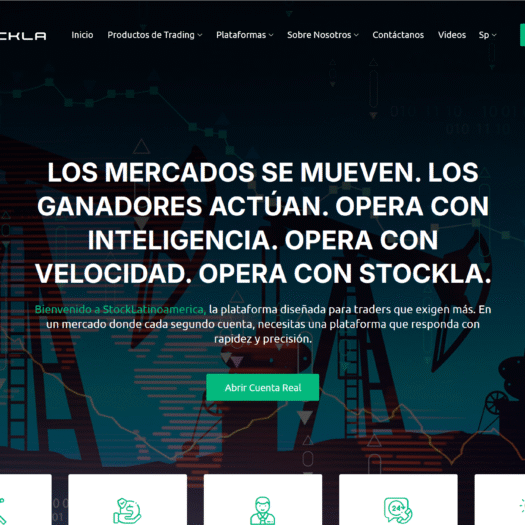
1) Explosive Regulatory Gap: Registration Regulation
Stockla is presented online as a “well-regulated” broker, yet investigators have found no valid financial license issued by a recognized regulator. The brand has been linked to GAMCO LTD in Saint Lucia—however, corporate IBC registration with Saint Lucia’s International Financial Centre does not constitute a brokerage license, and that body doesn’t license or supervise forex/CFD providers. In other words: a company registration is merely a mailing-card identity; it is not investor protection.
Why it matters: Without a bona fide license under a real financial authority, you lose oversight, ombudsman recourse, compensation schemes, and enforceable conduct standards. If something goes wrong, you’re negotiating with a website—not a supervised institution.
2) Powerful Absence of Oversight Across Major Jurisdictions
Credible multi-asset brokers can state, in one sentence, their regulator, license number, and legal entity—and those entries resolve in public registers (FCA, ASIC, CySEC, NFA/CFTC, etc.). With Stockla, public researchers have not found such entries. That’s not a minor footnote; it’s the whole story. No license means no mandatory reporting, no capital adequacy checks, no client-asset segregation rules, and no external auditor looking over the firm’s shoulder.
Bottom line: when the who-regulates-you test fails, the rest of the conversation is over.
3) Ownership Opacity: A Traceability Problem You Can’t Solve Later
Legitimate brokers are easy to pin down: exact legal name, company number, registered office, named directors, and stable contact lines. Stockla’s public footprint instead shows privacy-masked domain records and thin corporate detail. Even if a domain is old, anonymity plus evasive disclosures equals no one to hold accountable when withdrawals stall or accounts go dark.
Pro tip: age of a domain is not a proxy for legitimacy. Scammers also buy old domains to import “apparent” credibility.
4) Withdrawal Nightmares: The Exit Is the Test (And It’s Failing)
Multiple first-hand accounts describe the classic one-way friction pattern: easy deposits, then moving goalposts when investors try to withdraw. Users report being told to pay surprise “legalization,” “tax,” or “verification” amounts; some recount aggressive, shaming calls when they refuse to send more money. Others say their account was closed after they pressed for withdrawals.
Translation: If your first small, same-day withdrawal isn’t smooth, it won’t magically improve when the stakes are larger. In real finance, money out is as predictable as money in.
5) Reputation & Security Signals: Automated Checkers Flag High Risk
Independent reputation tools give Stockla a low trust score and list red flags such as masked ownership, negative user reviews, and content access anomalies. Some scanners explicitly label the site “suspicious,” note “no access” to content for automated analysis, and record user complaints referencing non-payment and “extra fees.” While machine scores aren’t regulators, they are early smoke—especially when their findings align with human reports.
Read the footnotes, not just the number: when risk indicators stack (negative reviews + privacy masking + low visibility + “no access” content), skepticism is not cynicism—it’s discipline.
6) Clone-Template DNA: Same Site, New Logo, Same Funnel
Across the unlicensed-broker ecosystem, operators scale by reusing the same web template—hero banner, “why choose us” tiles, bonus tiers, “education” blurbs—then swapping logos and color palettes. If Stockla feels eerily familiar, that déjà vu is a tell. The pattern lets operators rebrand and respawn when complaints pile up, preserving the marketing funnel while ditching the tarnished domain.
If you’ve seen one, you’ve seen many: design sameness in this space isn’t coincidence; it’s a business model.
7) Psychology Over Fundamentals: A Sales Machine, Not a Brokerage
Watch the funnel, not the font. High-risk platforms lean on behavior design, not fiduciary duty:
- Authority mimicry: badges, “certifications,” and market tickers that look official but aren’t verifiable.
- FOMO & urgency: “limited-time tiers,” “bonus windows,” and countdowns engineered to shortcut due diligence.
- Social-proof theatre: Telegram/WhatsApp groups full of scripted “wins.”
- Escalation: small early “payouts” to justify a bigger deposit—right before withdrawal gates rise.
If the energy goes into nudging your emotions rather than answering custody, licensing, and auditing questions, you’re being closed, not served.
8) Legal Fine Print That Tilts the Table Against You
When terms exist at all, unregulated sites often bury clauses that disempower clients: internal-only dispute handling, unilateral freeze powers, “release fees,” or wording that makes performance figures “illustrative only.” That’s not investor protection; it’s platform protection. A fair contract names governing law, allows external arbitration, and spells out custody safeguards in plain English.
Practical move: save PDFs/screenshots of every policy you see. Bad actors edit terms after disputes arise.
9) The Only Checklist That Matters (Use Before a Single Deposit)
- Match the exact domain to an entry in a real regulator’s public register. If it’s not there, stop.
- Get the legal entity (company name + number + address) and verify it in official corporate registries.
- Confirm a license number in the regulator’s own database—screenshots don’t count.
- Demand custody clarity (named institutions, segregated accounts) and verify independently.
- Ask for third-party audits you can confirm with the auditor.
- Read the Terms for freeze powers, “release fees,” or internal-only dispute rules.
- Start micro and test an immediate withdrawal—your best real-world proof.
- Avoid crypto-only rails that erase chargeback options and accountability.
- Archive everything—TXIDs, emails, chats, dashboard screenshots, KYC prompts.
- Heed pattern warnings: clone templates, masked ownership, and negative withdrawal reports are enough to walk.
Conclusion
The most important thing about Stockla isn’t its interface—it’s its infrastructure of accountability. And on the evidence available, that infrastructure looks thin to nonexistent. A legitimate broker is built to withstand scrutiny. It can name its supervisor and license number, and those entries resolve in the official register. It can point to custody arrangements with recognized institutions and produce audits you can verify with a separate firm. It has a legal entity you can find in corporate databases and real-world contact lines that still work when money is at stake. Above all, it treats withdrawals as routine—not as a leverage point to invent fees or stall for time.
Stockla, by contrast, exhibits the playbook of the unlicensed funnel: claims of being “well-regulated” that collapse under verification; corporate references that amount to a company registration (not a financial license); privacy-masked domain details; and an emerging body of user reports describing a predictable arc—easy deposits, reassuring dashboards, then a maze of excuses when clients try to cash out. Reputation scanners add algorithmic smoke to human fire, flagging low trust and “suspicious” signals that line up with what victims are reporting on the ground.
What should you do with this? If you have not funded an account, don’t start. “Opportunity” is abundant; recourse is not. Focus your time where law and audits protect you. If you have already engaged, act with urgency and discipline:
- Stop all new deposits immediately. Decline requests for “clearance,” “verification,” or “liquidity” fees.
- Collect evidence—contracts, terms, emails, chat logs, wallet addresses, transaction IDs, and account screenshots.
- Attempt a small withdrawal and document the process to establish behavior.
- Notify your bank or payment provider to explore recalls or chargebacks where possible.
- Report your case to your national regulator and cybercrime authority; patterns are built from many individual reports.
- Beware of “recovery” pitches promising instant refunds for a new upfront fee; secondary scams prey on the same victims.
Finally, carry this forward as a discipline, not just a cautionary tale. Before you ever fund a brokerage again, make verification a ritual: regulator → license number → legal entity → custody → audits → day-one withdrawal test. If a platform fights you on any of those steps—or if independent sources have already raised alarms—you’ve learned enough to protect your capital.
Financial markets reward patience and process. Confidence schemes reward speed and silence. When presentation is loud and proof is quiet, trust the silence. Keep your funds where law, transparency, and clean exits are non-negotiable realities—not marketing claims.


